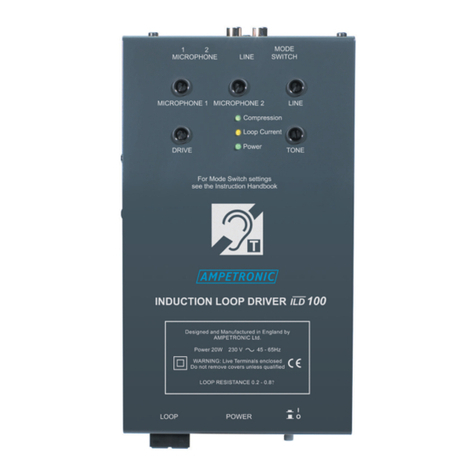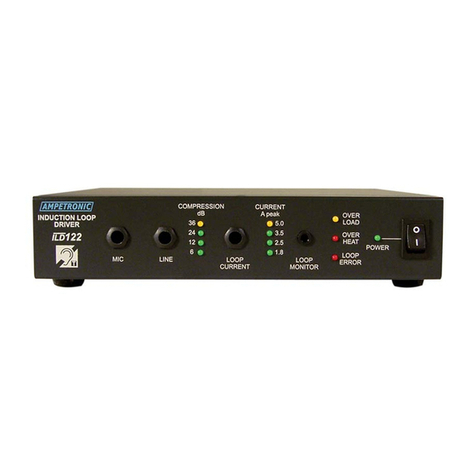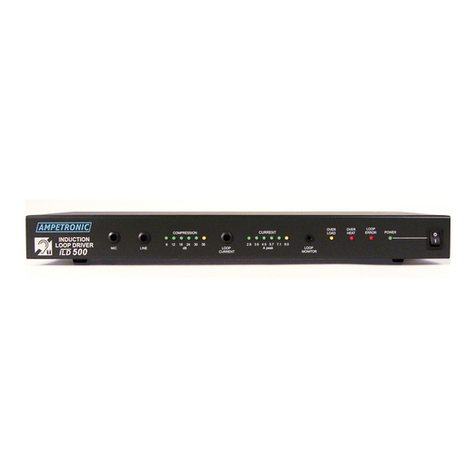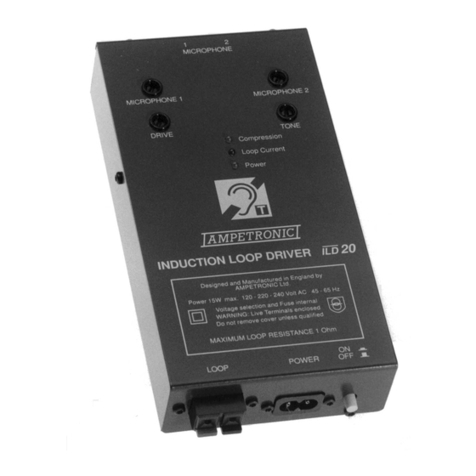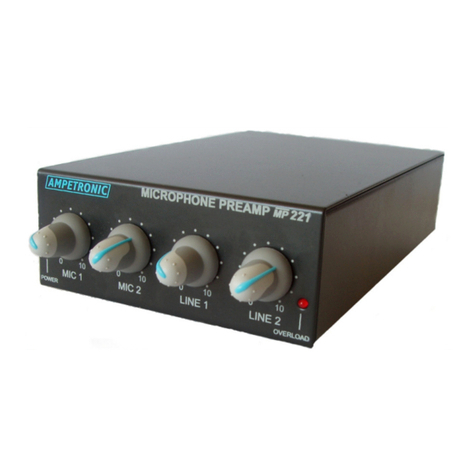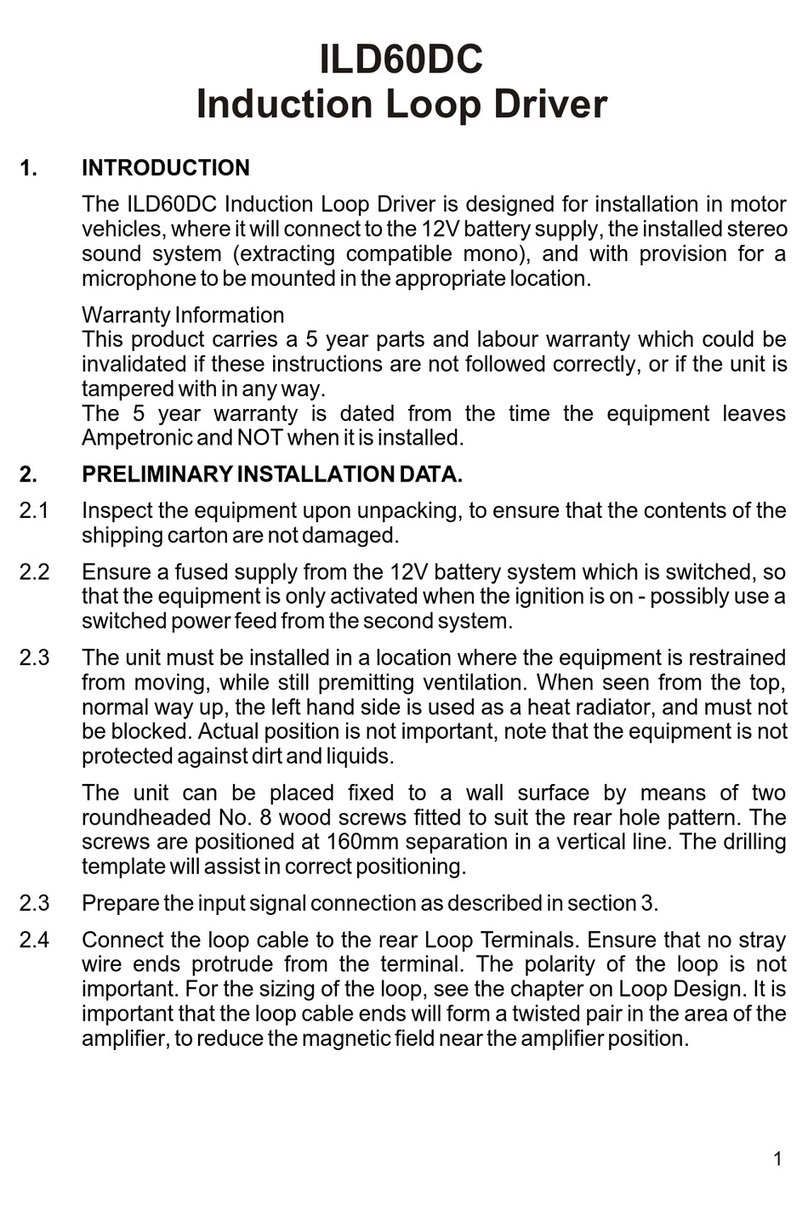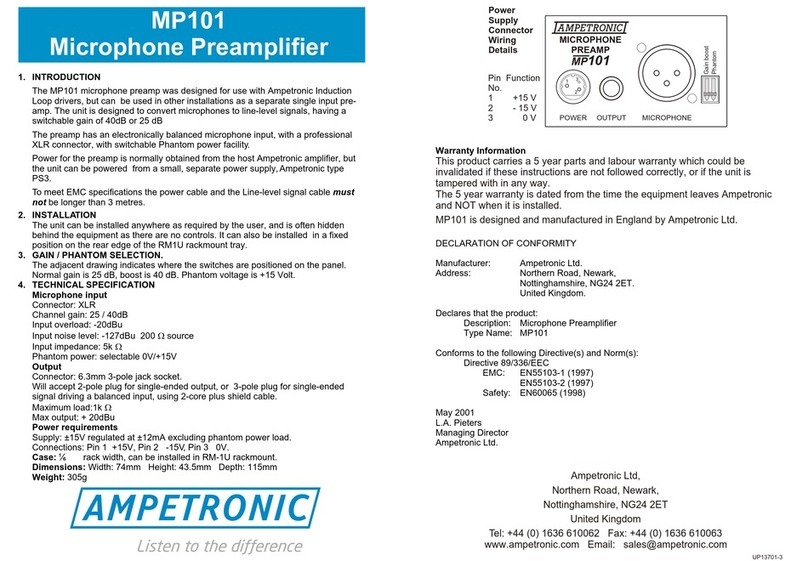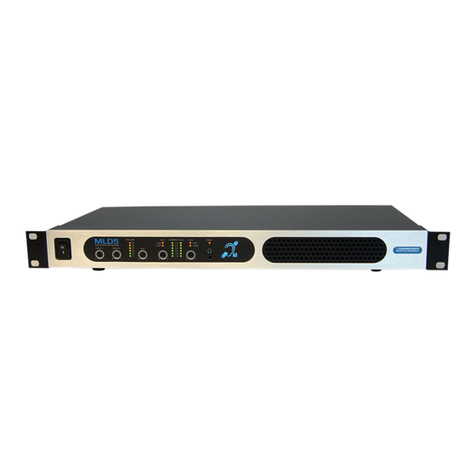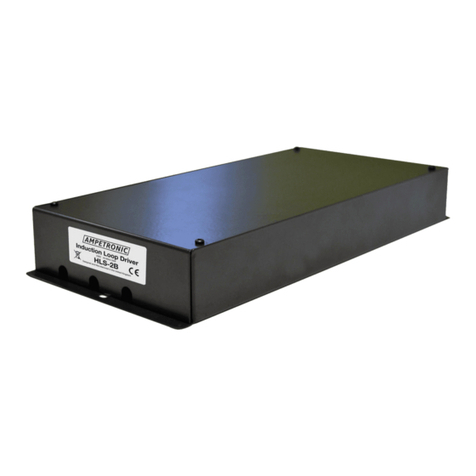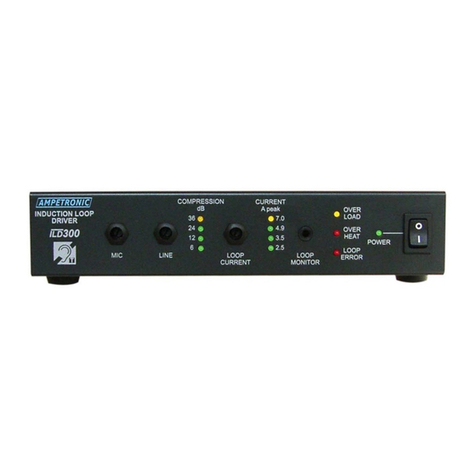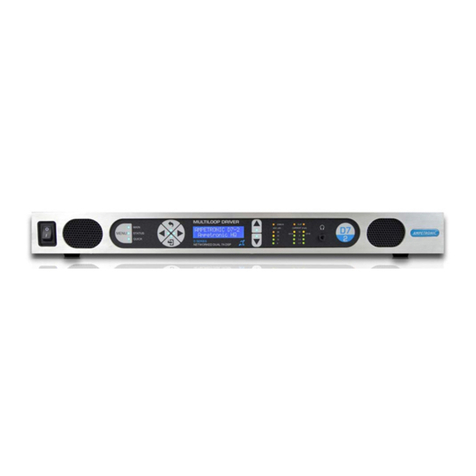
10
its own knock-out. However if all inputs are to be used it is possible to route line
level signals with the loop cable for a short distance.
Once knock-outs are removed fit suitable cable glands with strain
relief or conduit fittings to protect the cable and maintain safety. If
the AC power is fed to the unit using a cable which is accessible
to the user use the P-clip provided for additional strain relief as
well as a suitable cable gland. see Connections drawing.
Any knock-outs left open must be blanked off with a suitable plug. Cable
glands and conduit fittings are available at most electrical suppliers.
The CLS1 is classed as permanently connected apparatus and as
such shall be installed in accordance with relevant building and
wiring regulations.
Connection and Set-up
It is advised that the loop system is initially set up using a local audio source
such as a CD player, which is not connected into any other system. This
avoids the complication of ground loops and feedback etc, whilst the unit is
set up.
The following procedure assumes cables have already been
installed to the site where the unit will be mounted and that
the AC power feed is isolated.
1. Mount the unit in its intended position.
2. Route cables / conduits to appropriate knock-outs or through the back
panel. The black heatsink bar can reach 90°C in normal operation
and may affect cables which are touching it. Cables must be
routed away from this area.
3. Turn all controls fully anti-clockwise.
4. Connect the loop feed cable into the loop terminals. The feed cable
should be tightly twisted. The ‘Designing Induction Loops’ handbook
contains more details on loop and feed cables. The correct design and
positioning of the actual loop is vital for satisfactory system performance.
If in doubt consult Ampetronic for advice.
5. Connect the signal inputs appropriately:
Microphones (balanced only):Suitable dynamic or condenser
microphones. Select phantom power as required. Connect to
appropriate terminals of INPUT 1 (with Mic/line selector switch in the
Mic. position) see Connections drawing.
Line level signals (balanced or unbalanced): From other audio
equipment such as PA system, mixing desk or CD player. If no
microphone is used connect to appropriate terminals of INPUT 1 (with
selector switch in the Line position) see Connections drawing.

